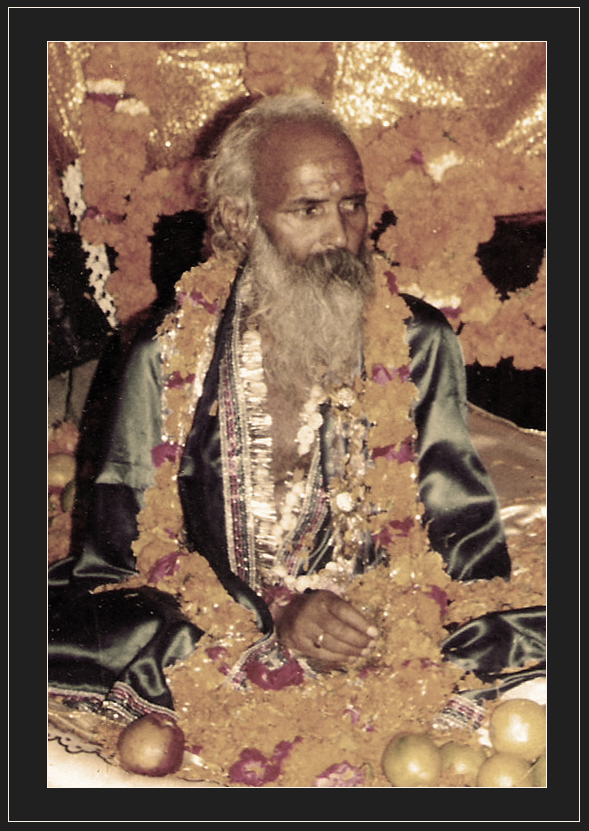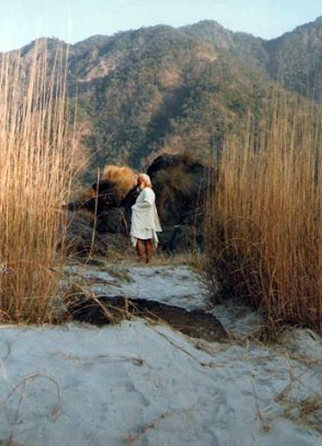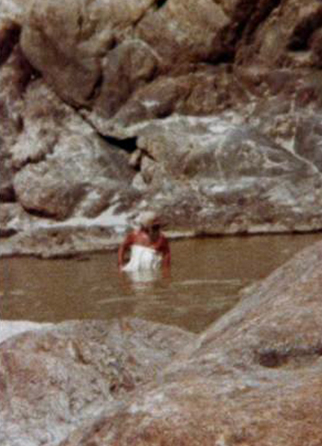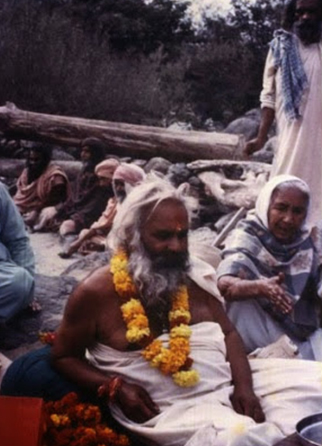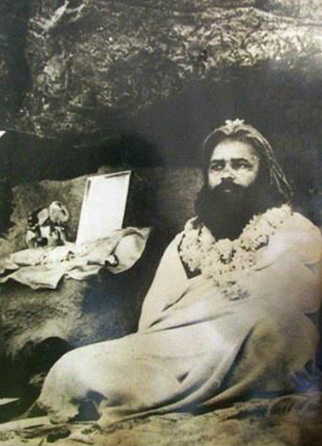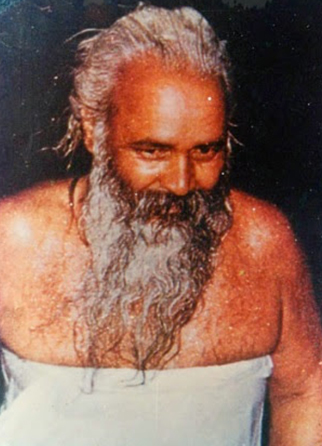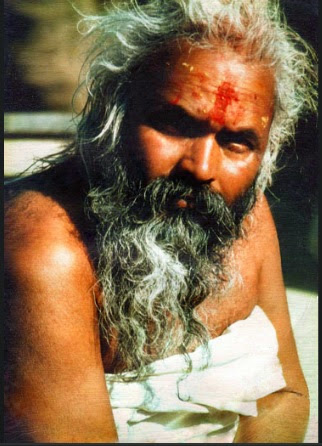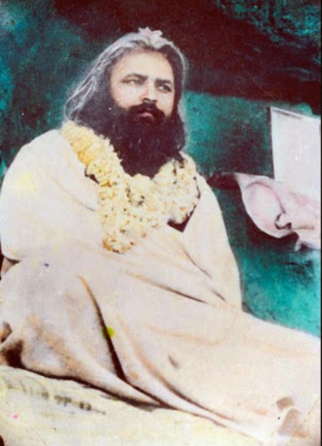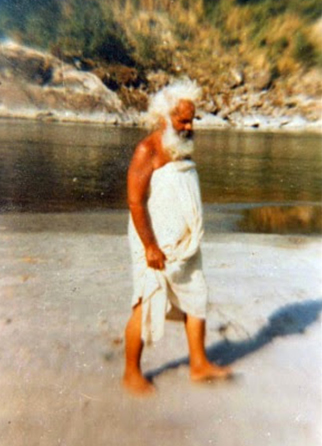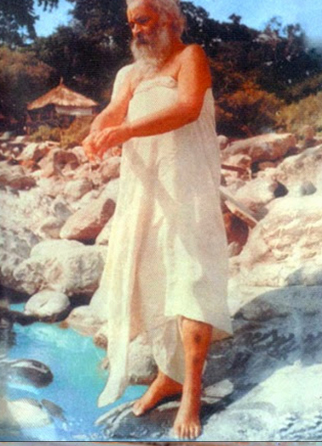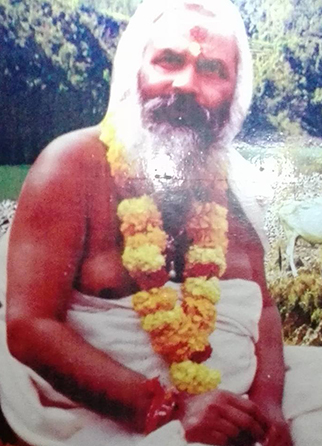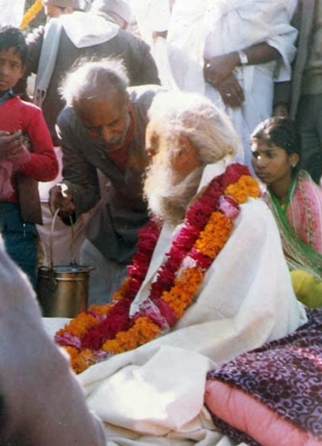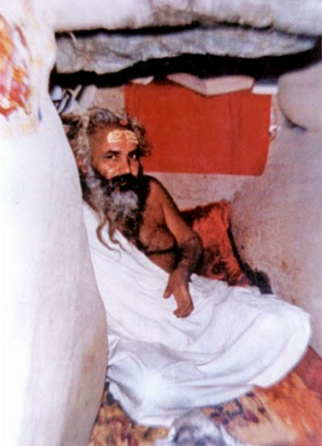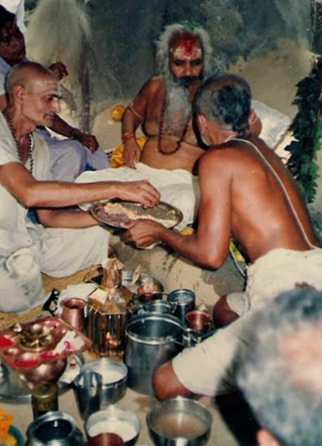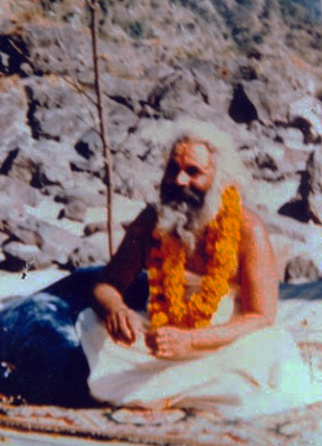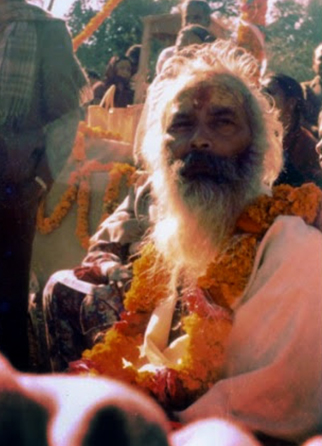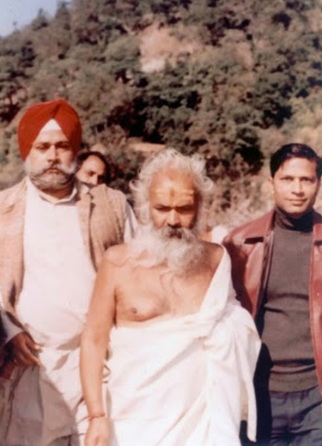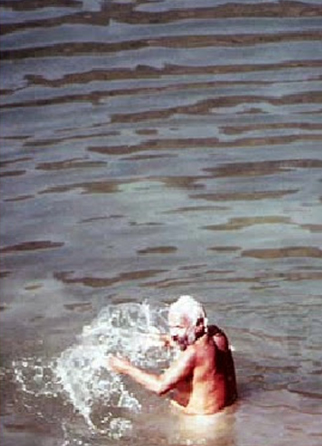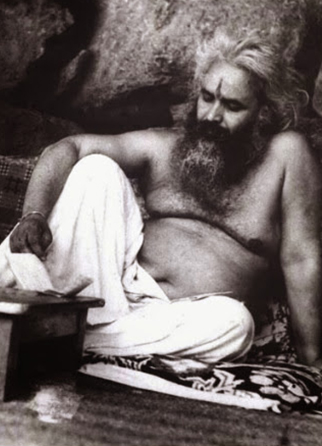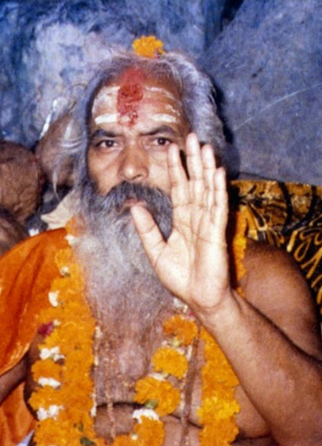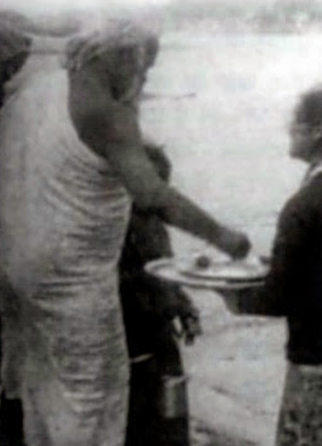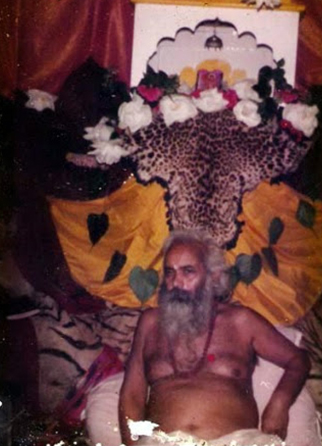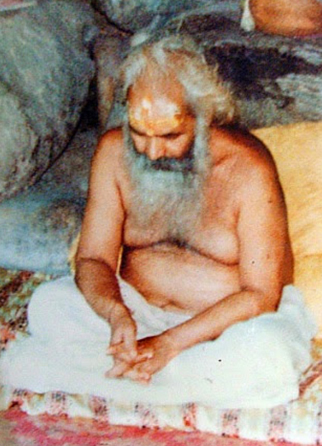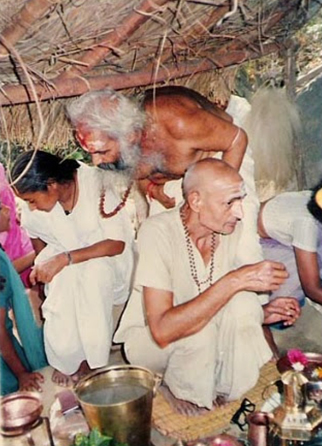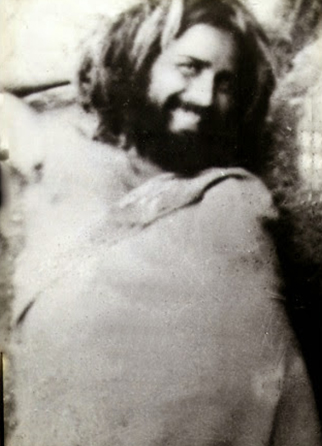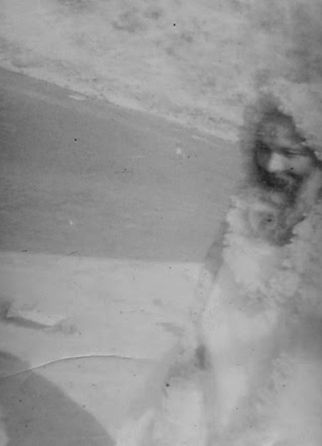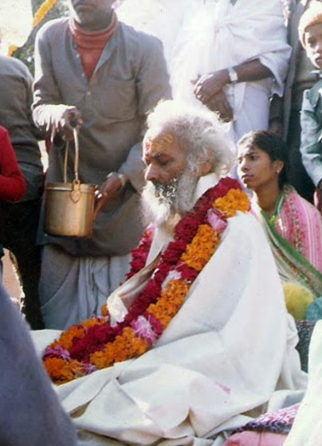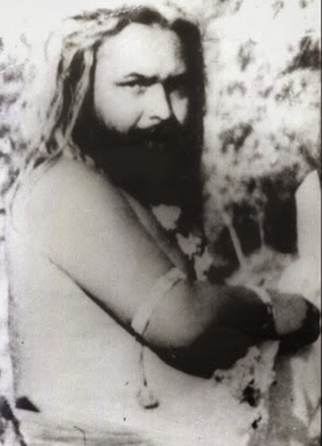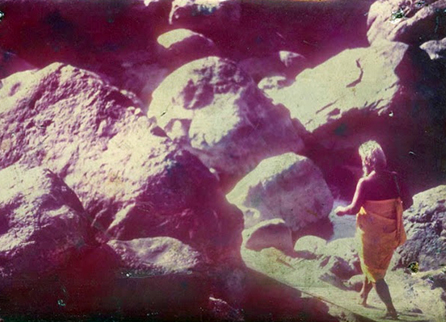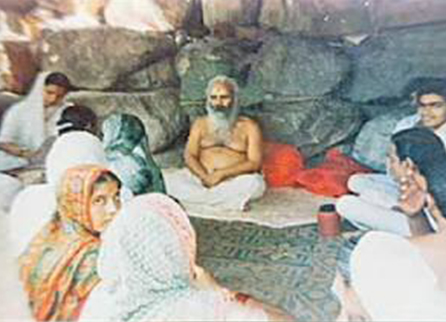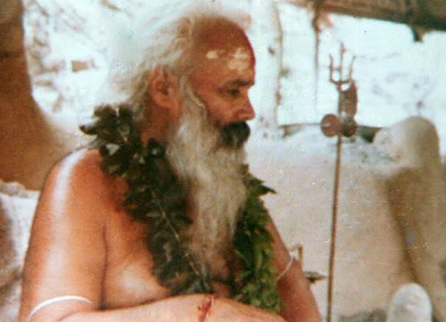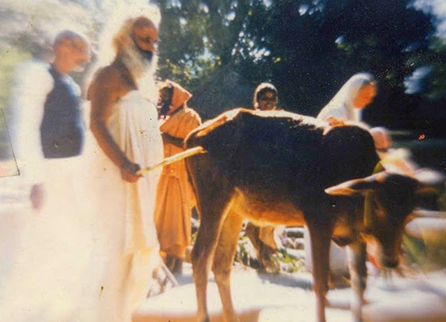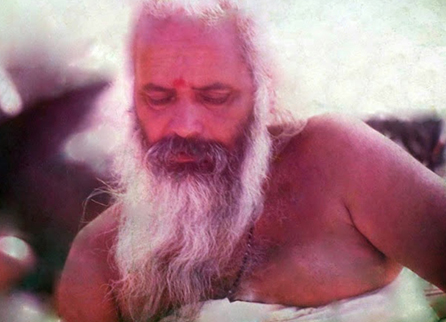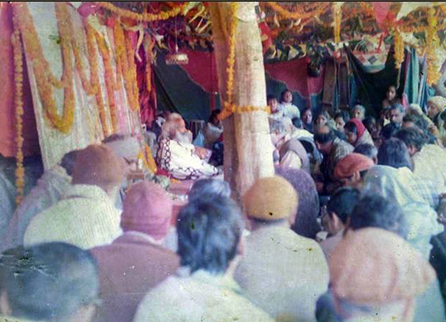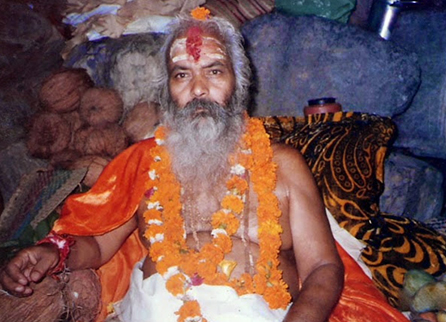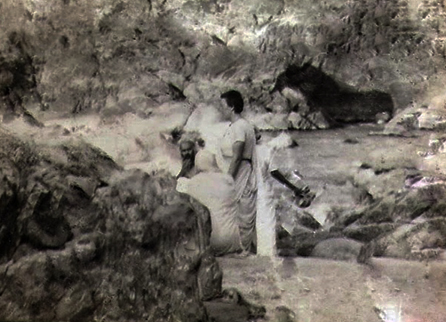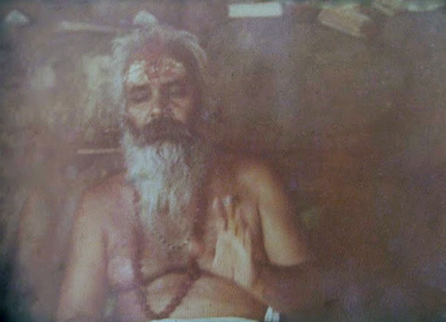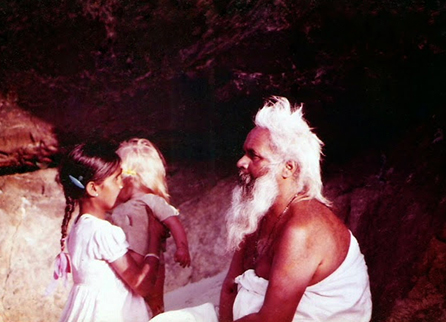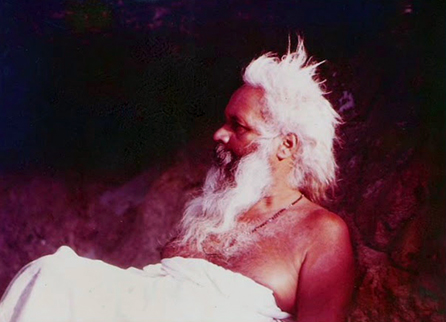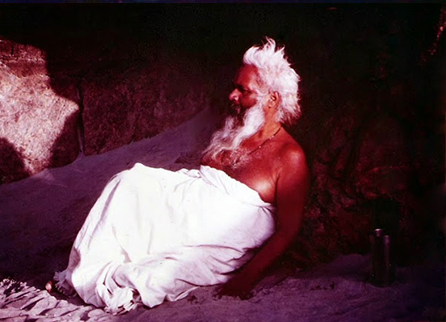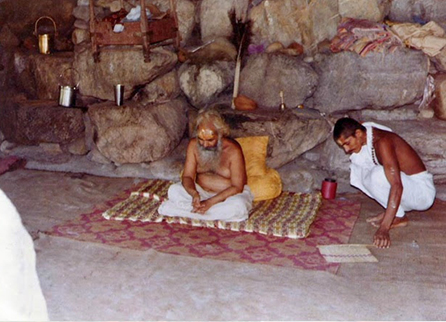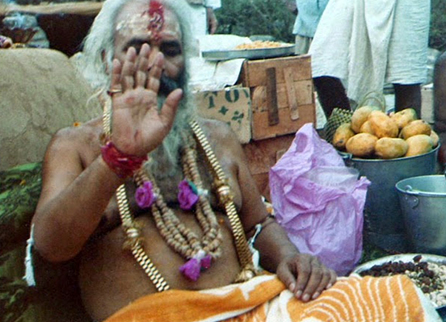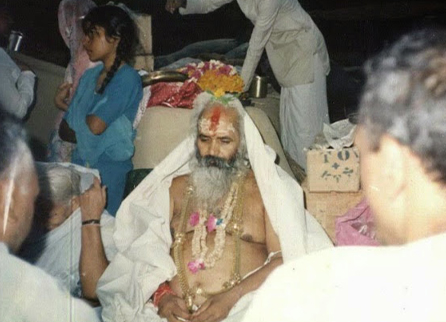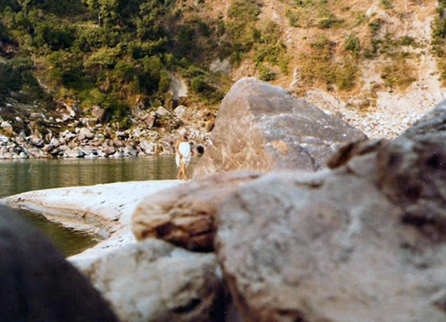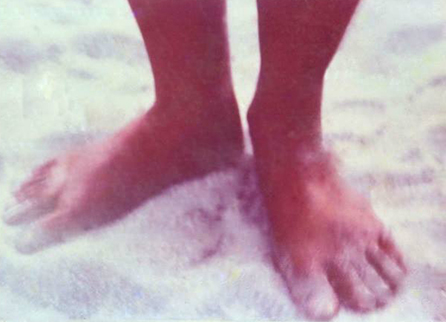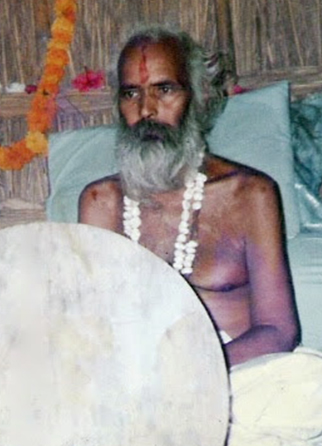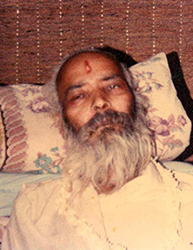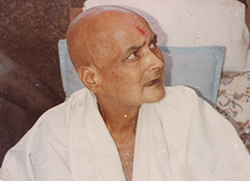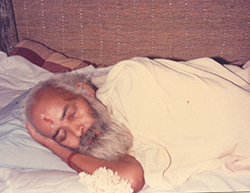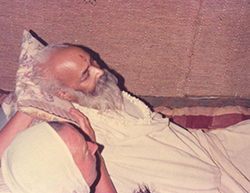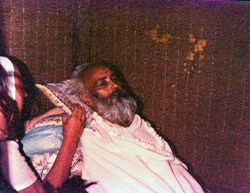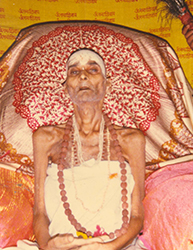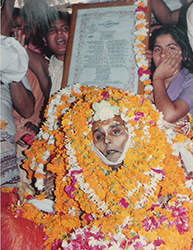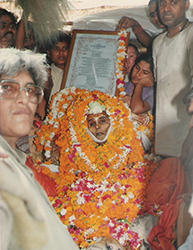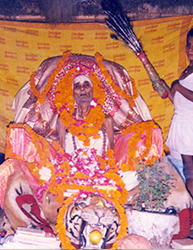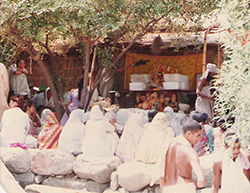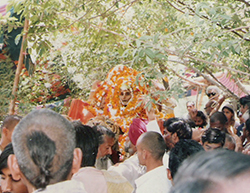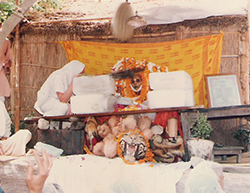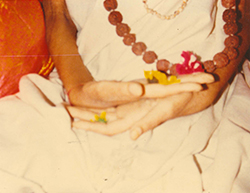H.D.G. Bhagavan Avadhuta Sri Mastarama Babaji Maharaja
vande śrī-mastarāmaṁ
brahma-svarūpaṁ vareṇyaṁ
gaṅgā-tīre himādrau
svānanda-līnaṁ dayālum
vairāgyāt tyāga-mūrtiṁ
premāspadaṁ bhāva-gamyaṁ
mukti-dvāraṁ mumukṣor
bhakta-prabhuṁ me śaraṇyam
“I bow to Bhagavān śrī Bābā Mastarāmji Mahārāja, Who is Himself Para-brahman, Who is most excelent and Who is to be wished for. In the Himalaya, on the bank of the Gaṅga He is amerced in His own bliss, and yet He is compassionate. From dispassion he is the personification of renounciation yet He is the abode of love and can be reached by love. He is the door of liberation, the Lord of the devotee and my refuge.”
His Divine Grace Bhagavān Avadhūta Śrī Mastarāma Bābājī Mahārāja manifested in Rishikesh, India. His past is completely unknown. No one knows any details about his birthplace, family, identity, or origin. He never gave any information that could be used as a reference point to connect to some past in his life. Seeing him in a state of divine intoxication and steady enlightenment, the public began to refer to him as Mastarāma. The meaning of mastarāma in Sanskrit is “one who enjoys in divine intoxication” or “intoxicated with divinity.” Bhagavān was an avadhūta, totally transcendental to all worldly attachment. He was a jīvanmukta, or “liberated in life.”
Bhagavān was the master of H.D.G. Avadhūta Śrī Brahmānanda Bābājī Mahārāja, who was the guru of Prabhuji, H.D.G. Avadhūta Bhaktivedānta Yogācārya Ramakrishnananda Bābājī Mahārāja.
The earliest information we have about him dates from approximately the early sixties. At that time, before moving to Hanūmān Śilā, halfway between Ramjhoola and Lakshmana Jhoola, he used to sit under a banyan tree near the Vānaprastha Āśrama in Swarg Āśrama or on the ghat near Gita Bhawan.
We learn that he came to the Hanūmān Śilā area in the early 1960s from the book entitled Śrīmad-bhagavad-gītā Mastabhāṣya, which includes Bhagavān’s talks given from September 12, 1965 to March 28, 1967. Because these talks were given at the Hanūmān Śilā, we know that prior to 1968, he used to stay near Hanūmān Śilā at the beginning of the rainy season. Likewise, we know that during the rainy season he used to go to Badrinath barefoot and wearing only with a cotton chadar. Since 1969, he stopped going to Badrinath to stay in the Hanūmān Śilā area. In summer evenings, he used to rest under the shade of Hanūmān Śilā and in winter, he used to sit and enjoy the sun on the beach. Bhagavān used to especially enjoy the sand of the Ganges. The place where Bhagavān used to sit near Hanūmān Śilā was known as Math. At first, he slept under one rock or another. Then, he stayed in a cave next to Hanūmān Śilā. Eventually, the cave we know today became his usual residence.
Only in the rainy season, he would leave the place because it used to get flooded.
Made only of wood and cloth, there was the Dharmashala, which served as a hall for sat-saṅgs with Bhagavān. At the entrance of the cave, there was a terrace where in the evenings, devotees, disciples, and followers used to sit. Generally, the meetings took place in the mornings and at sunset, and the public used to meditate in silence while enjoying Bhagavān’s presence. On certain occasions, he would answer questions from visitors or disciples. A small hut served as the Devī’s temple during Navarātra and under a tree, Bhagavān had erected a Śiva-liṅgam.
When speaking of a being of such a level, historical, and biographical details lose all importance and meaning for his disciples. The siddha-yogī ceases to be a person and becomes a phenomenon of eternal present; he is not someone but the Whole, just a presence, an aroma, a perfume.
H.D.G. Bhagavān Avadhūta Śrī Mastarāma Bābājī Mahārāja is a true giant of the spirit. A realized śaivasaint, a mahā-bhāgavata (pure vaiṣṇava devotee), and a śakta master. He is a bona fide siddha-yogī and a fully realized avadhūta. He is a faithful representative of Vedanta as he has realized his authentic nature. Bhagavān was a realized master of karma, bhakti, haṭha, rāja, jñāna, tantra, and kuṇḍalinī yoga; he has gone beyond the pairs of opposites and transcended duality. In Bhagavān, we find a perfect harmony between the highest Advaita wisdom and the most refined devotion, or bhakti. He was a sat-puruṣa, or antarjñānī, an enlightened being who was constantly in the atmic state.
He left his physical body on July 10, 1986, although in reality, he was never born, never died: he only descended to visit us out of his infinite mercy and compassion.
उत्पत्तिं प्रलयं चैव भूतानामागतिं गतिम् |
वेत्तिं विद्यामविद्यां च स वाच्यो भगवानिति ||
utpattiṁ pralayaṁ caiva
bhūtānām āgatiṁ gatim
vēttiṁ vidyām avidyāṁ
sa vācyo bhagavāniti
“He who understands the creation and dissolution, the appearance and disappearance of beings, the wisdom and ignorance, should be called Bhagavān.” (Viṣṇu-purāṇa, VI.5.78)
Bhagavan’s Maha-samadhi
Bhagavān used to attend the Kumbha Mela at Haridvāra. His temperature would often rise and he used to fast until it came down. Upon his return in April 1986, Bhagavān had a fever and started fasting. But this time it was different, because he reduced his food to such an extent that he began to weaken. After the Govardhana Pūjā of 1986, he practically stopped eating. His body became so weak that on April 13, 1987, he was unable to go to Hanūmān Śilā as he usually did. His deteriorating physical condition began to make it difficult for him to go in and out of the cave; therefore, a two-room thatched hut was built in the place we now know as the samādhi. Whenever possible, Bhagavān would go out and take a seat in front of his hut to offer darśana. Ārati was performed daily in front of the hut.
The disciples tried to convince him to eat, but Bhagavān refused to eat and would only accept drinking coconut water. At the request of several disciples and devotees, he agreed to shave because he was vomiting saliva and found it uncomfortable. The last three weeks before giving up his physical form, Bhagavān drank only coconut water, although he later gave that up as well to drink only sips of Gangajal. Various disciples and devotees tried to help in different ways, but a doctor brought to him claimed that Bhagavān would not live more than 72 hours.
The evening before entering māhā-samādhi, Bhagavān requested help in sitting and then performed a hatha yoga kriyā called nauli. That same day in the evening, inside his hut, he told Nani Mā that outside were two vaiṣṇava bābās who should be given prasāda and a place to sleep. Both vaiṣṇava bābās served the devotees whose hearts were full of sorrow and grief. On the last day that Bhagavān remained in his physical form, his disciples sat around him chanting the Holy Names while in their hearts they feared that perhaps it would be the last time they would have the fortune to enjoy his darśana. Following Bhagavān’s direction, he was taken out of the hut and placed in the sand in front of the door. At the request of some disciples, Nani Mā hurried to the koṭhī to bring mālās of tulasī and rudrākṣa, which were placed around his neck. His breathing became slower and slower until 4:00pm of Yoginī Ekādaśī (June 21st, 1987), Bhagavān inhaled but without exhaling any more. Although Bhagavān’s body resembled a skeleton, he continued to be as resplendent as ever.
It is worth noting that, for some time, several disciples had requested Bhagavān to start an akhand-kīrtan. He agreed to the request and chose the date of the beginning of the kīrtan at Yoginī Ekādaśī in 1986. The akhand-kīrtan ended on Yoginī Ekādaśī day of 1987, when its purpose seemed to have been fulfilled as the announcement of the day when Bhagavān would leave his sacred physical form that had been the delight of the hearts of his disciples, devotees, and followers.
Bhagavān’s sacred body was seated on a cedarwood siṁhāsana made by Premjī from a large tree that had come down from the mountains in the flooded Gangajī in the past monsoon. Throughout that night, many members of the public came to offer their respects and receive the last darśana. The next morning, the siṁhāsana was moved to the Dharmashala where Bhagavān usually used to sit surrounded by disciples, devotees, and followers and a pūjā was performed. Subsequently, the siṁhāsana was taken to the guphā and placed on the cabūtarā. His disciples, along with devotees and bābās, carefully bathed his body in the holy Ganges and then seated him on the stones placed in a wooden box made of crossbeams cut from the same cedar tree that brought the flood waters of Ganga in the rainy season of 1986. After the appropriate sacrifices, the casket was carried by boat to the center of the Ganga, right in front of the āśrama. The entire audience stared as the casket with Bhagavān’s sacred body was immersed in the Ganges. When it disappeared under the waters, the audience glorified Bhagavān with deep devotion, exclaiming, “Bābājī Mahārāja kī, Jayā!”
From that time on, the very place that had been overflowed with the bliss of Bhagavān’s presence looked sad and desolate. Even the cows lost their appetite and a red cow that Bhagavān had affectionately named Gītā sat at the entrance of the guphā for several days while shedding tears of sadness. The pain of separation experienced by his disciples, devotees, and followers was overwhelming. However, in the course of time, the nectar of Bhagavān’s divine presence gradually descended once again upon the sacred place.




